The Crucial Role of Cytokines in Biomedical Research and Drug Development
Table of Contents
Low Endotoxin Cytokines Matters
Organoid culture, CAR-T cell therapy, stem cell therapy, and other topics have become broadly discussed among biomedical researchers. In fact, it is not difficult to see that these advanced technologies are all related to cell culture. In order to maintain efficient growth, proliferation, and differentiation during in vitro cell culture, many cell cultures require the addition of various cytokines.
Cytokines Backgrounds
Cytokines are proteins synthesized and secreted by immune cells such as monocytes/macrophages and certain non-immune cells such as endothelial cells, epithelial cells, and fibroblasts, in response to stimulation. They play a role in regulating immune responses, cell growth and differentiation, tissue damage, and repair, among other biological activities.
Classification and function
Cytokines can be classified into different groups based on their functions, including: interleukin (IL), interferon (IFN), tumor necrosis factor (TNF), colony stimulating factor (CSF), chemokine family, growth factor (GF), and TGF-β family.
|
Cytokine Types |
Functions |
Example Genes |
|
Interleukins (IL) |
Regulate immune responses, cell growth, and differentiation |
IL-1, IL-2, IL-6, IL-10, IL-12 |
|
Interferons (IFN) |
Antiviral defense, modulate immune responses |
IFN-α, IFN-β, IFN-γ |
|
Tumor Necrosis Factor (TNF) |
Induce inflammation, apoptosis, and immune responses |
TNF-α, TNF-β |
|
Colony Stimulating Factors (CSF) |
Stimulate growth and differentiation of specific blood cells |
CSF-1, CSF-2, CSF-3, GM-CSF |
|
Chemokine Family |
Control cell migration, involved in immune responses |
CXCL8, CCL2, CXCL12, CXCR4, CCR5 |
|
Growth Factors |
Promote cell growth, tissue repair, and development |
EGF, FGF, PDGF, VEGF, TGF-β |
|
TGF-β Family |
Regulate cell growth, differentiation, and immune responses |
TGF-β1, TGF-β2, TGF-β3 |
Cytokines Applications
Cytokines are a type of signaling protein that primarily regulates a series of biological functions by binding to specific receptors. These functions include innate and adaptive immunity, hematopoiesis (blood cell formation), inflammation and repair, proliferation, and differentiation.
They are usually applied to the fields of:
- Cell culture additives: Added to the cell culture system to stimulate cell proliferation and differentiation. Various cell factors are involved in processes such as stem cell culture, immune cell culture, and organoid culture.
- Disease modeling: Using cytokines in vitro to establish disease models for studying disease mechanisms or testing therapeutic drugs.
- Cytokine drugs: Cytokines have antiviral or anti-tumor effects and can be directly developed into recombinant protein drugs, such as interleukin-2 and interferon, which are already on the market.
- Antibody drug development: Cytokines can be used as immunogens to immunize animals and screen for antibody drugs targeting cytokine targets for disease treatment.
- Disease diagnosis/monitoring markers: Cytokines in the body are in a dynamic balance, and excessive secretion or expression of certain cytokines can lead to the development of diseases. By measuring the levels of relevant cytokines, disease diagnosis and prognosis monitoring can be performed.
- Medical aesthetics: Cytokines can promote cell proliferation and differentiation, and have functions in tissue regeneration and wound healing, making them valuable in medical trauma repair.
How to Choose High-Quality Cytokines
Cytokines have extensive applications in basic scientific research and drug development. However, extracting them from samples such as blood is challenging due to low content, low purity, and high cost, which cannot meet market demands. Currently, cytokines are primarily produced through genetic engineering and DNA recombinant technology, enabling large-scale production. Therefore, selecting high-quality recombinant cytokines becomes particularly important. Failing to choose the right cytokines may impede smooth experimentation, wasting time, effort, and precious sample materials. Therefore, when selecting cytokines, the following factors should be considered:
- Supplier selection: Generally, companies with good reputation and higher technological capacity are preferred, as they have the capability to conduct various quality control tests on cytokine products to ensure their quality.
- Number of citations: A higher number of citations indicates more extensive experimental validation and higher reliability.
- Information about the cytokine product itself: Higher purity, lower endotoxin levels, and better biological activity indicate higher product quality.
BetaLifeScience has independently developed over 60 low-endotoxin cytokines (<10 EU/mg). This helps eliminate interference from endotoxins in experiments and is particularly suitable for research involving organoids, stem cells, immune cells, and disease modeling.
Product Features:
- All products are sterile and can be used directly without the need for additional filtration or sterilization.
- They as well have low endotoxin levels (<10 EU/mg), significantly lower than the industry average
- High purity, high activity, and high batch-to-batch consistency.
- They are also Free from carrier proteins.
- Most of our cytokine selections are in stock, orders are shipped within one work week.
Beta LifeScience’s Cytokines portfolio covers for a variety of experimental scenarios with the rich variety which includes interleukins, growth factors, interferons, tumor necrosis factors, chemokines, and the TGF-beta family, suitable for research on organoids, stem cells, immune cells, and disease modeling.
Organoid culture factors have been validated in organoid cultures and exhibit excellent performance.
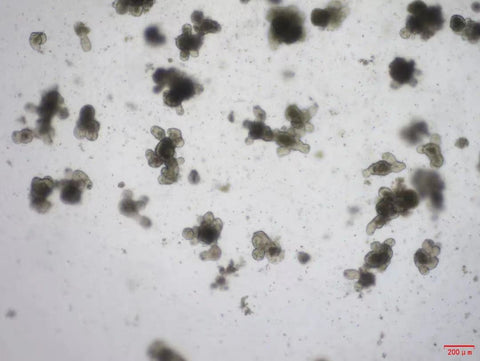
Sample Product Data
Recombinant Human Noggin(Cat. No.:BL-2253NP)

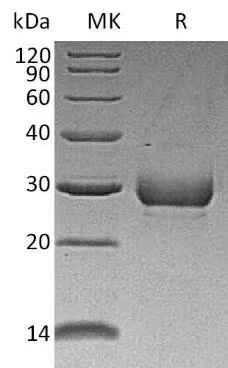
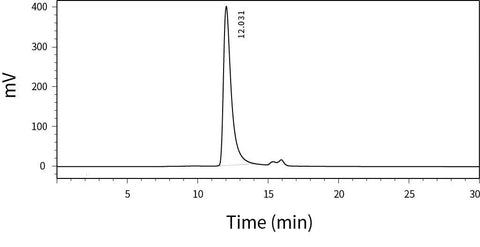

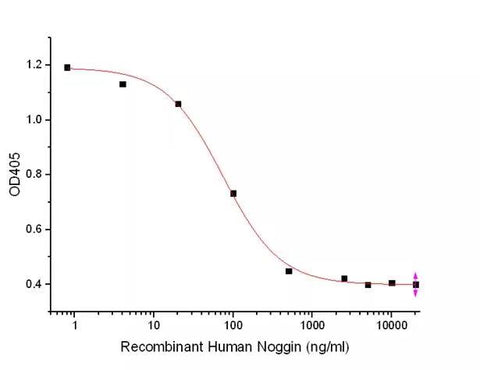
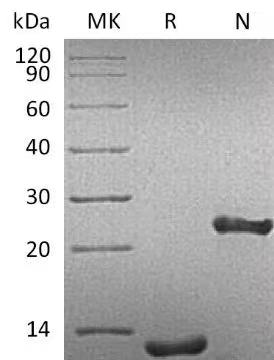

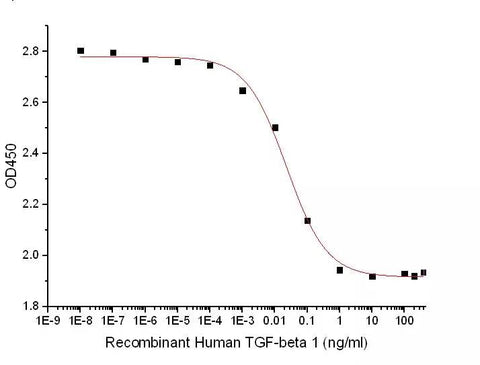

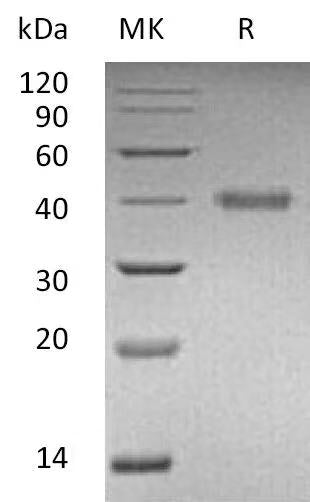

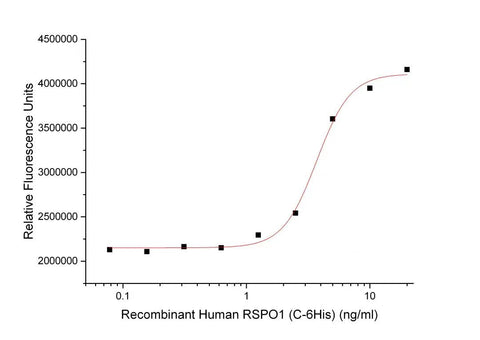
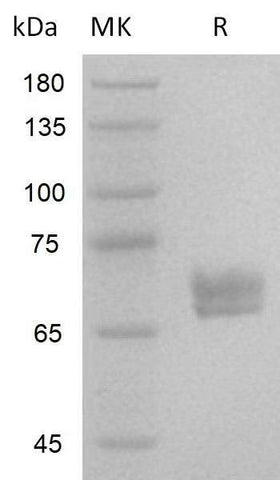
Featured Low Endotoxin Cytokines
|
Cat. No. |
Product Name |
|
Recombinant Human/Mouse/Rat Activin A |
|
|
Recombinant Human Beta-NGF |
|
|
Recombinant Human/Murine/Rat BDNF |
|
|
Recombinant Human/Mouse/Rat BMP-2 |
|
|
Recombinant Mouse CCL2 |
|
|
Recombinant Human CXCL1 (C-6His) |
|
|
Recombinant Human CXCL12 (68AA) |
|
| BL-2511NP |
Recombinant Human DKK-1 (N-8His) |
|
Recombinant Human EGF |
|
|
Recombinant Human FGF-19 (N-6His) |
|
|
Recombinant Mouse FGFb |
|
|
Recombinant Human FGFb (146AA) |
|
|
Recombinant Human FGF-10 |
|
|
Recombinant Human FGF-4 (153AA) |
|
|
Recombinant Mouse FGF-4 |
|
| BL-2874NP |
Recombinant Human/Mouse FGF-8b |
| BL-2891NP |
Recombinant Mouse FGF-9 (C-6His) |
|
Recombinant Human FLT3LG (C-6His) |
|
|
Recombinant Human G-CSF |
|
|
Recombinant Human GM-CSF (E. coli) |
|
|
Recombinant Mouse GM-CSF |
|
|
Recombinant Mouse G-CSF (C-6His) |
|
|
Recombinant Human HGF (C-6His) |
|
|
Recombinant Mouse HGF (C-6His) |
|
|
Recombinant Human IFN gamma |
|
|
Recombinant Mouse IFN gamma |
|
|
Recombinant Human IL-1a |
|
|
Recombinant Human IL-2 |
|
|
Recombinant Mouse IL-2 |
|
|
Recombinant Human IL-3 (C-6His) |
|
|
Recombinant Mouse IL-3 (C-6His) |
|
|
Recombinant Human IL-4 |
|
Cat. No. |
Product Name |
|
Recombinant Human IL-6 |
|
|
Recombinant Human IL-7 (C-6His) |
|
|
Recombinant Human IL-10 |
|
|
Recombinant Mouse IL-10 |
|
|
Recombinant Mouse IL-12 |
|
|
Recombinant Human IL-15 |
|
|
Recombinant Human IL-17A (C-6His) |
|
|
Recombinant Mouse IL-17A (C-6His) |
|
|
Recombinant Human IL-18 (C-6His) |
|
|
Recombinant Human IL-21 |
|
|
Recombinant Mouse IL-21 |
|
|
Recombinant Human IL-33 |
|
|
Recombinant Mouse IL-33 |
|
|
Recombinant Human LIF |
|
|
Recombinant Human M-CSF (C-6His) |
|
|
Recombinant Mouse M-CSF |
|
|
Recombinant Human NT-3 |
|
|
Recombinant Human NRG1Beta (245AA) |
|
|
Recombinant Human NovoNectin |
|
|
Recombinant Human Noggin |
|
|
Recombinant Human OSM (N-6His) |
|
| BL-2688NP |
Recombinant Human PRL |
|
Recombinant Human RSPO1 (C-6His) |
|
|
Recombinant Human SHH |
|
|
Recombinant Mouse SHH |
|
|
Recombinant Human SHH (C24II) |
|
|
Recombinant Mouse SHH (C25II) |
|
|
Recombinant Human SCF |
|
|
Recombinant Mouse SCF |
|
|
Recombinant Human TGF-beta 1 |
|
|
Recombinant Mouse/Rat TGF-beta 1 |
|
|
Recombinant Human TGF-beta 2 |
|
|
Recombinant Human/Mouse/Rat TGFB3 |
|
|
Recombinant Human TPO (N, C-6His) |
|
|
Recombinant Mouse TNF alpha |
|
|
Recombinant Human VEGF165 |
Reference
[1]. Capobianchi, Maria Rosaria et al. “Type I IFN family members: similarity, differences and interaction.” Cytokine & growth factor reviews vol. 26,2 (2015): 103-11. doi:10.1016/j.cytogfr.2014.10.011
[2]. Balkwill, Frances. “Tumour necrosis factor and cancer.” Nature reviews. Cancer vol. 9,5 (2009): 361-71. doi:10.1038/nrc2628
[3]. Bath, P M W, and N Sprigg. “Colony stimulating factors (including erythropoietin, granulocyte colony stimulating factor and analogues) for stroke.” The Cochrane database of systematic reviews ,2 CD005207. 18 Apr. 2007, doi:10.1002/14651858.CD005207.pub3
[4]. Metcalf, Donald. “The colony-stimulating factors and cancer.” Cancer immunology research vol. 1,6 (2013): 351-6. doi:10.1158/2326-6066.CIR-13-0151
[5]. Hughes, Catherine E, and Robert J B Nibbs. “A guide to chemokines and their receptors.” The FEBS journal vol. 285,16 (2018): 2944-2971. doi:10.1111/febs.14466
[6]. Tzavlaki, Kalliopi, and Aristidis Moustakas. “TGF-β Signaling.” Biomolecules vol. 10,3 487. 23 Mar. 2020, doi:10.3390/biom10030487












